

Pontoon boats on the mighty Mississippi River?! Oh yes! What better way to enjoy this massive body of water than on a pontoon boat, a step up from Mark Twain’s writings of an enjoyable lazy river raft ride so many years ago with Huck Finn and Tom Sawyer.

Pontoon boats on the mighty Mississippi River?! Oh yes! What better way to enjoy this massive body of water than on a pontoon boat, a step up from Mark Twain’s writings of an enjoyable lazy river raft ride so many years ago with Huck Finn and Tom Sawyer.
Much of the scenery hasn’t changed over the years. Today the bald eagles are still seen, along with over 230 different species of birds at the various refuges just a few miles away from the two marinas. The area is a popular location for those looking to enjoy less chaos from the traffic and congestion of the holiday events in nearby St Louis.
Cruising along the Illinois River, just a few miles north of Grafton, is the Pere Marquette State Park, which at 8,050 acres is the largest state park in Illinois. Marquette, a Jesuit priest who was the co-leader of a 1673 voyage of exploration on the rivers with Louis Jolliet, was the first European to map the area. The visitor center has exhibits on local ecology and history. The park itself includes a faulted geologic anticline, an upward arching of stratified rock dating back some 200 million years. The Pere Marquette Lodge & Conference Center boasts a 700–ton stone fireplace and life-size chess board and there are several launch ramps for private boats to enter the Illinois and Mississippi Rivers if you happen to bring your own boat.

The refuge encompasses 9,225 acres of riverine and floodplain habitat scattered around the confluence of the rivers. It was established to protect and enhance habitat for migratory birds, where nearly 300 bird species can stay as they migrate. There is a refuge bird list available at the visitor center with an outdoor viewing deck of spectacular vistas and there are also bird tours available at different times of the year. It is recognized as an urban refuge due to the proximity to St. Louis.
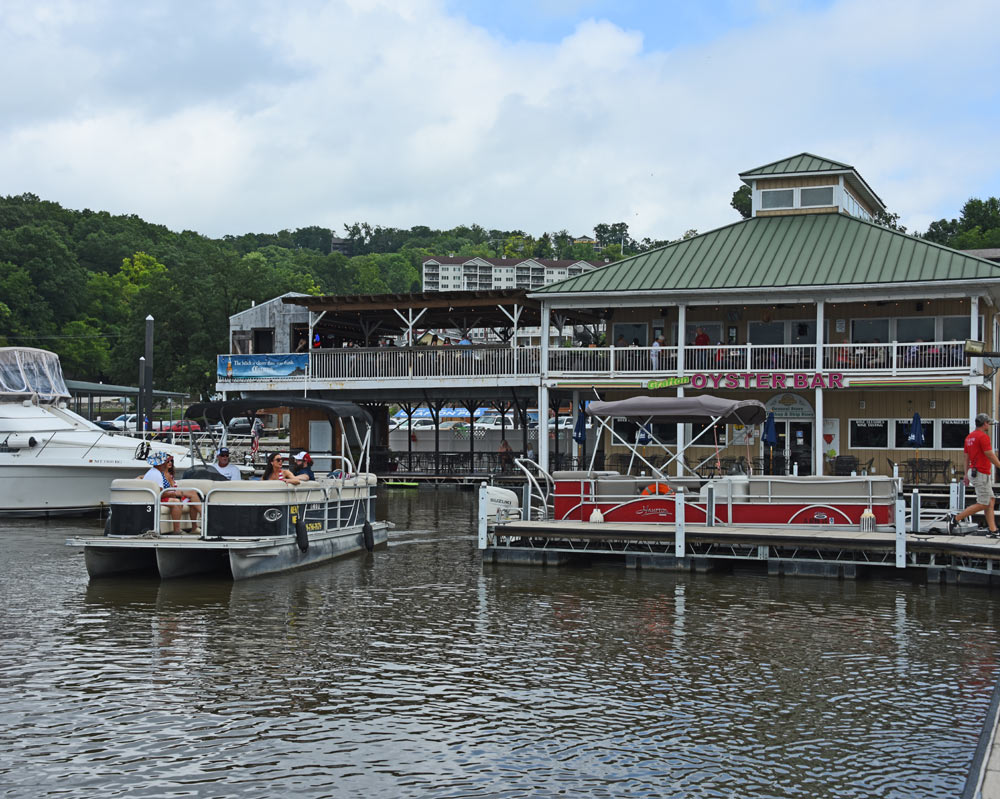

What makes the Grafton Harbor Marina unique to the area is its long list of licensed guides that can take you out on the rivers for a nominal fee, enhancing your time on the river.
You can enjoy the Mason Chute or slues along the Illinois River with large rafts or mats, go to several beaches, or just listen to the guide as he gives the history and interesting information of the Palisade Bluffs and limestone cliffs. He can guide you through the Mississippi River while missing the drift or floating tree debris.
Joe Boarman or Mike “Mac” Mcgillicutty are both licensed guides who work closely with the marina and can explain the need to be cautious while traversing the rivers.

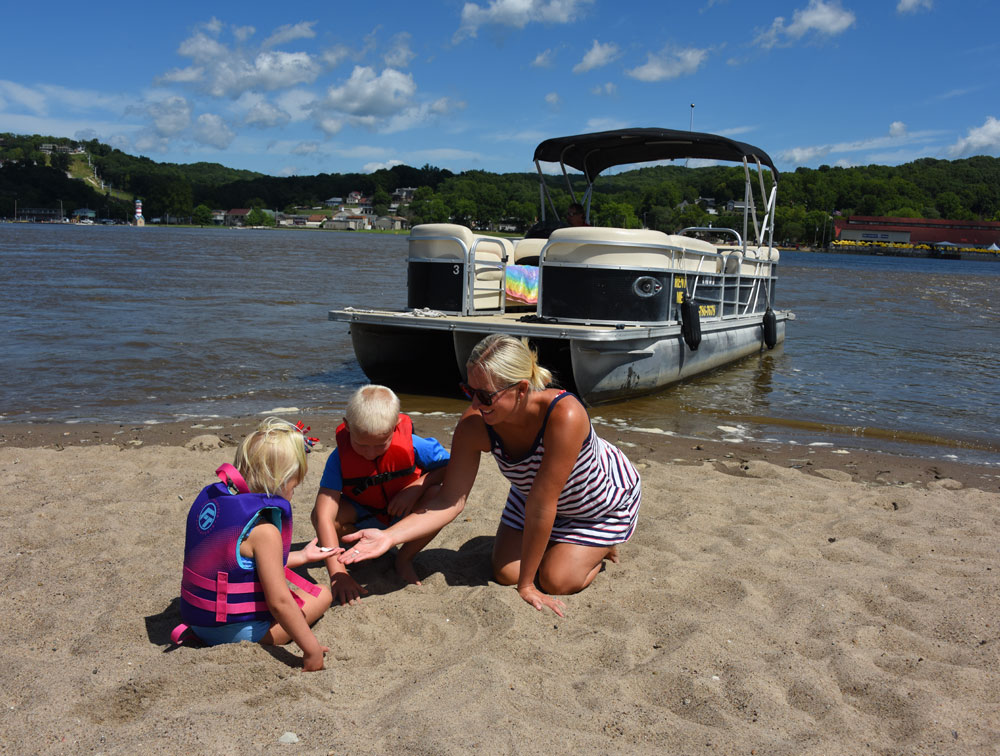
DeSherlia’s daughter and her children, CoJo and Isabella, took the opportunity to use a pontoon boat and search for shells at a nearby beach during the morning of the Fourth. A bald eagle was perched preening on a small broken branch before getting there and delighting the children. The sand to form the beach is dredged river channel sand, so the frequent barge traffic can continue up or down river safely.
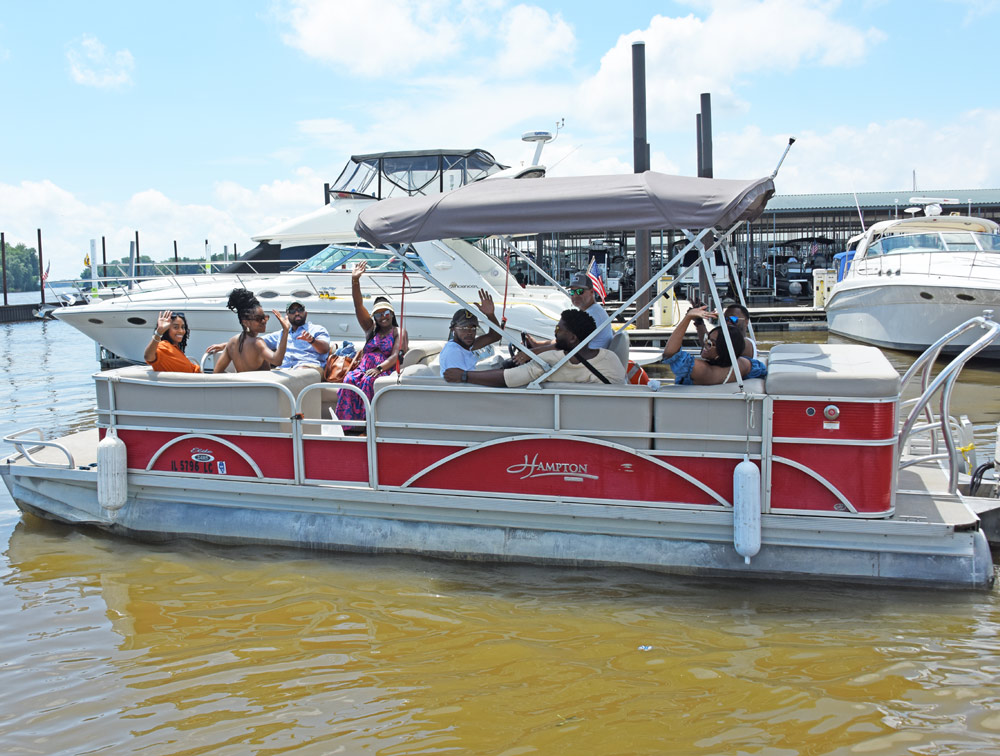
Cruising down river, be sure not to miss the legend and cliff painting of the Piasa bird, meaning bird that devours men. Indian legend states that the monstrous villainous creature loved to eat humans. To defeat the Piasa bird, Illini Indian Chief Quatoga directed about 20 warriors to shoot at it with poisoned arrows while he stood in open view as bait. This effort ended the Piasa bird, thus saving many other humans.
Also along the way south, an area can be seen on the east side where a deep indented Magnesian limestone cliff reminds you of the many quarries that employed over 2,000 German and Irish immigrants. The quarries supplied stone for local buildings and structures in St. Louis, particularly for the Old Cathedral and Eads Bridge.
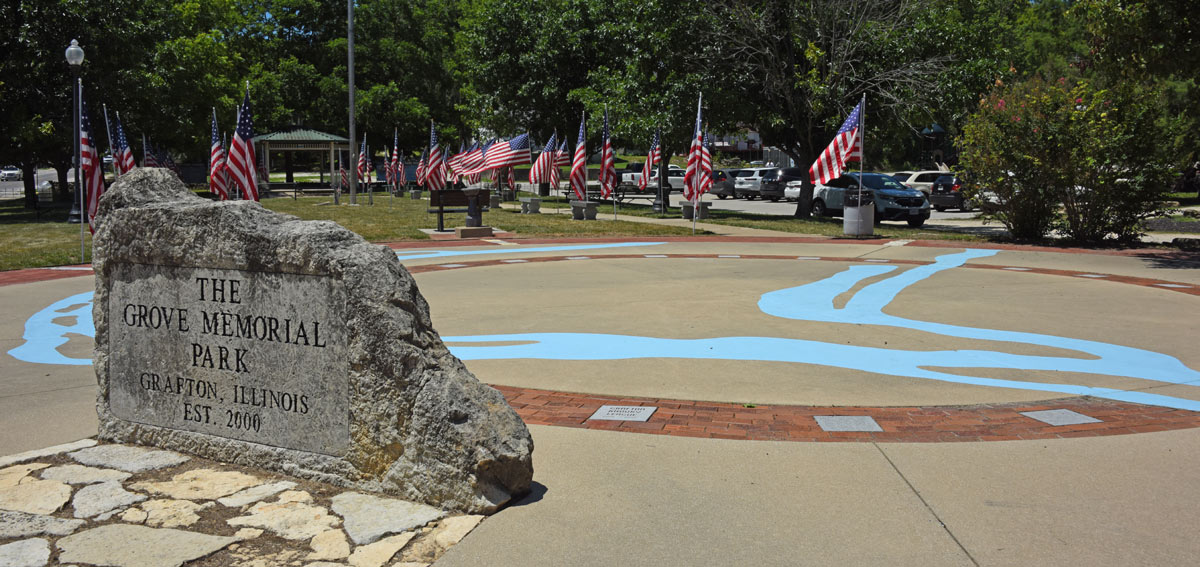
Many roads are still paved with bricks, since there were several brick factories. Industry and agriculture were prominent years ago because of its location, but today smaller boutiques and a myriad of great restaurants take its place, especially so close to the marina on East Broadway St.

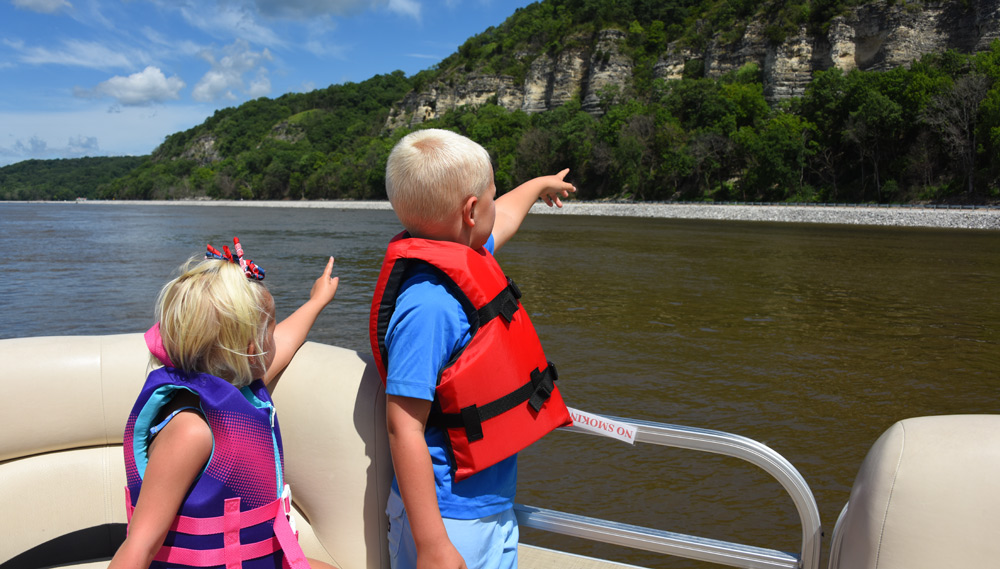
While waiting to watch the evening fireworks from your pontoon boat, you can let the children run and play at the Riverfront Park adjacent to the marina; the safe playground will occupy them. Or walk a little further to the Alton Amphitheater (4,000 seats with stage) and enjoy live music and festive food. The fireworks are set off just across the river from the park, always on July 3. This schedule means you can see the fireworks here one night and cruise the next night up to Grafton for their firework extravaganza on the Fourth.
There is also the Argosy Casino that is less than a mile away. You can walk along Riverfront Drive from the marina to the casino while looking for active bird life. Or just take your car if you have it there, and be sure to go to the National Great Rivers Museum at Melvin Price Locks and Dam just a couple of miles south of the marina.
The museum is also an education to our young people, presenting them with an understanding in its engineering of locks and dams, and its importance of our ecosystems that encompass the whole middle-America and beyond. Public tours are available daily for the chance to see and hear about the new Lock and Dam No. 26 adjacent to the museum.


Freedom was very important centuries ago to our original colonists. Freedom meant independence from British rule. Today freedom is still a very important belief but only through hard work, perseverance, determination and the strong belief in democracy can we continue to be free. Today we continue to proudly fight for our freedom as we reflect on our history while watching those spectacular firework displays over the Mississippi River during the Fourth of July holiday.
US Army Corps of Engineers
618-462-1713